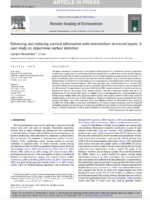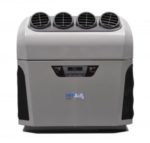New York Assemblyman William Magnarelli (D-120), along with the Syracuse Center of Excellence and CenterState Corporation for Economic Opportunity (CEO), announced July 19 that five Upstate New York companies are the recipients of fifth-round Commercialization Assistance Program (CAP) awards—totaling $246, 475—to promote the commercialization of innovative green and clean technologies. The announcement was made at Syracuse University’s Green Data Center on SU’s South Campus, where technology by one of the recipients, Vette Corp., is being used.
Combined, the projects being commercialized by these companies—thanks to funding secured by Magnarelli—have the potential for creating as many as 111 high-value jobs and tens of millions in new revenue for Central Upstate New York and other Upstate regions over the next five years.
“CAP is a great opportunity for local entrepreneurs who focus on environmentally friendly products to stay in the Central Upstate New York area and commercialize their products,” says Magnarelli. “The renewed emphasis on green and clean products and services will allow Syracuse and its surrounding area to continue to distinguish itself as a leader in the field of environmentally-friendly product production.”
The five CAP award-winning companies and their projects are:
- ACT Bioenergy of Schenectady, N.Y. (www.actbioenergy.com) Potential jobs created/retained: 30-50 within five years. ACT Bioenergy is producing a commercial-scale, high-efficiency wood pellet/wood chip gasification boiler for use in institutional, commercial and multi-family residential buildings. The design is based on a European gasification boiler that has been proven in Europe and has now been adapted for the U.S. market. Awarded $50,000.
- Orthogonal of Ithaca, N.Y. (www.orthogonalinc.com)Potential jobs created/retained: 25. Based on more than $1 million in research funded by the National Science Foundation and completed at Cornell University, Orthogonal is commercializing a patent pending, non-toxic photoresist (light sensitive material) for producing organic electronics, including photovoltaics and energy-efficient solid state lighting (OLEDs). Because of the photoresist’s non-toxic nature, as compared to conventional resists, Orthogonal will enable New York electronics manufacturers to produce next generation electronics and gain a higher profit margin with minimal capital investment. Awarded $50,000.
- Cameron Manufacturing & Design of Horseheads, N.Y. (www.camfab.com) Potential jobs created/retained: 5- 8. Cameron Manufacturing & Design will create a comprehensive commercialization plan for the patented Grid Electrode Precipitator (GEP) (a device to remove air contaminants) that is currently in the final stages of design and manufacturing by Cameron at Clarkson University. It is being beta-tested at the Infotonics Technology Center in Canandaigua, N.Y. Awarded $46,475.
- Vette Corp. of Ontario, N.Y. (www.vettecorp.com) Potential jobs created/retained: 32. Vette Corp.’s Open Sidecar—branded “Coolcentric”—is a passive “in-row” data center cooling product based on patent pending technology. As of Dec. 2009, five prototype units have been manufactured and installed at SU’s Green Data Center. The current prototype design enables complete neutralization of up to 40kW of heat generated by IT equipment mounted within an IBM NetBay Enterprise rack. In cooperation with SU and IBM, Vette is working through product field tests to gather additional quantitative and qualitative data on performance capabilities and product functionality. Awarded $50,000.
- e2e Materials of Ithaca, N.Y. (www.e2ematerials.com) Potential jobs created/retained: 4. This project will focus on building e2e’s commitment to Central Upstate New York as the company works on the acquisition, installation, testing and trial of a press and custom tooling to make prototype forms for its petroleum-free, biodegradable composites, including a corrugated “i-core” shape for structural applications, as well as complex shapes like boxes and corners. The proposed pilot scale facility will enable in-house manufacturing of molded products and flat sheets for sale, prototype development of molded building product concepts and molded cubicle wall concepts, and future rapid development of other molded products to respond to partner interest and develop new markets. Awarded $50,000.
The Commercialization Assistance Program—which over five rounds has awarded a total of more than $1 million to 21 Upstate companies—is made possible by a grant secured by Magnarelli, administered through SyracuseCoE and CenterState CEO. CAP grants are awarded for projects that commercialize new products and services in the fields of indoor environmental quality, water resources and clean and renewable energy—the three focus areas of the SyracuseCoE.
To date, CAP has created or retained more than 152 green and clean technology jobs in New York state. Companies that have benefited from the program can point to new products and services and, in some cases, new companies and expanded operations that are gaining a foothold in this competitive market.
Four of these companies are: O’Brien & Gere of East Syracuse, which thanks to a 2001 CAP grant has successfully commercialized systems for the capture and control of pollutants from industrial processes such as indoor dry material handling, surface coating, electroplating and metal machining; OrthoSystems of Syracuse, which thanks to a 2004 CAP grant has spun off AlloCAS, Inc., a company that sells molecular sensors for the rapid detection of waterborne pathogens and bioterror agents, and has leveraged more than $230,000 in additional R&D funding; NuClimate of East Syracuse, which thanks to a 2004 CAP grant has commercialized its “Q” Air Terminal, expanding its production facility from 4,000 to 15,000 square-feet and reporting $5 million in sales and $4.5 million in orders up to the fourth quarter of 2009; and Isolation Sciences of Williamsville, N.Y., which thanks to a 2008 CAP grant has received a patent for its energy efficient fumehood kit.
“For today’s CAP award recipients, these grants will help to bridge the gap from a smart idea to a great new product and, ultimately, a successful generator of jobs and revenue for the region,” says Robert M. Simpson, president of CenterState CEO. “Together with Assemblyman Magnarelli and SyracuseCoE, we are proud of the jobs and economic impact that this program has already achieved and the promise it holds for the region’s future.”
”SyracuseCoE’s Commercialization Assistance Program is a key stage in our innovation ecosystem model that seeks to take green and clean innovations from laboratories and workshops and into residential and commercial buildings, where they will create energy-efficient and more healthful and productive environments,” says Ed Bogucz, executive director of SyracuseCoE. “None of these innovations would be possible without collaboration. I applaud these companies and universities for working together to develop, demonstrate and deploy urgently needed technologies, as well as Assemblyman Magnarelli and CenterState CEO for their continued support of and assistance with CAP.”

 While not particularly thought of as a health hazard, high levels of salt are being found in streams and groundwater—affecting our watershed and therefore our overall water quality. Through SyracuseCoE-funded research conducted in Fishkill Creek in Dutchess County, NY, Stuart Findlay of the
While not particularly thought of as a health hazard, high levels of salt are being found in streams and groundwater—affecting our watershed and therefore our overall water quality. Through SyracuseCoE-funded research conducted in Fishkill Creek in Dutchess County, NY, Stuart Findlay of the 

